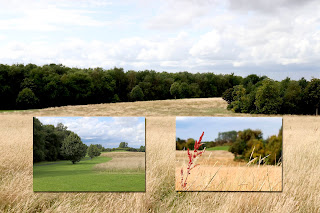Corkagh Park

Corkagh Park spans over 150 acres between the Naas Road and historic Clondalkin Village. The park incorporates the lands of Corkagh House which was demolished in the early 1960s leaving only the stables and outbuildings visible today. The estate was bought by Dublin County Council in 1983 and opened as a public park in 1986. Corkagh has a long and interesting history with much to discover as you wander its paths and tracks. The name Corkagh comes from the Irish word for marshy land and indeed areas of the park near the Camac have a tendency to become waterlogged during wet periods. The river Camac which rises SE of Saggart flows through the park towards Clondalkin village, then on through Inchicore and Kilmainham before entering the Liffey near Heuston Station. The Camac at Corkagh While the Camac seems little more than a stream most of the time it has been known to become a raging torrent after heavy rain. Pier under water at the Fishing Lakes There hav
